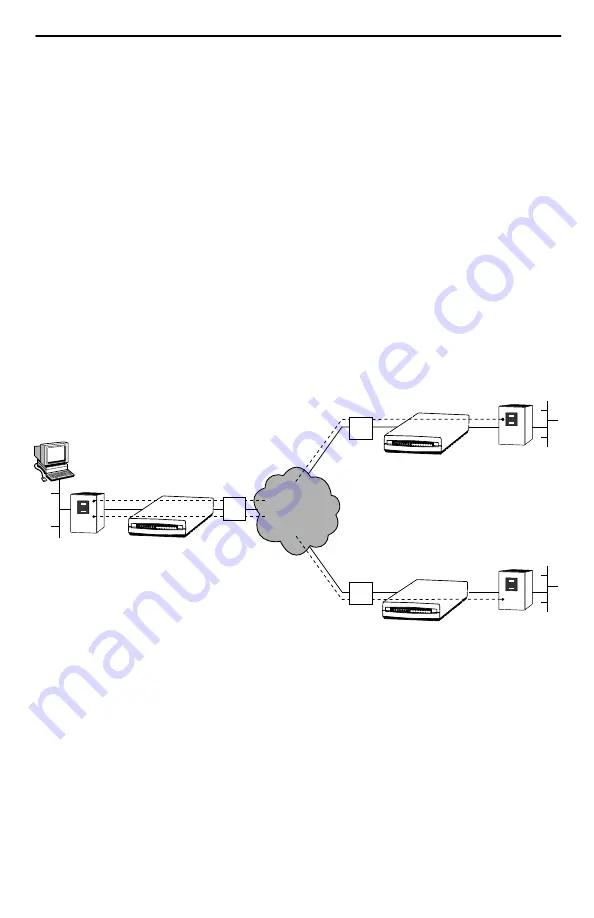
7
Installing and Setting Up the 9820 FrameSaver Unit
The following sections guide you through installation and setup of a FrameSaver unit.
It is assumed that the FrameSaver unit is configured for factory default settings at the
start of installation.
For correct operation of the unit’s Hardware Bypass feature, both the network and user
port interface types need to be the same, and the combined length of their cables
should not exceed the maximum length limitation for the interface type (EIA-530A, V.35,
or X.21). In addition, both the source and primary destination DLCI numbers need to be
the same.
See the following illustration for an example of a network that includes FrameSaver
units at the central site (e.g., the company’s headquarters in Munich) and the remote
sites (e.g., branch offices in London and Singapore). User data PVCs provide
LAN-to-LAN connectivity between the central site and the remote sites.
Frame
Relay
Router
Central Site
FrameSaver
Unit
NMS
Munich
Headquarters
Port NET
NTU
NTU
NTU
NET Port
Frame
Relay
Router
Remote Site
FrameSaver
Unit
London Office
DLCI/EDLCIs:
100/0 User Data
100/2 Management Data
NTU
NTU
NTU
London Office
London Office
NTU
NTU
NTU
NET Port
Frame
Relay
Router
Remote Site
FrameSaver
Unit
Singapore Office
DLCI/EDLCIs:
200/0 User Data
200/2 Management Data
Frame
Relay
Network
100
200
DLCI/EDLCIs:
100/0 User Data for London
200/0 User Data for Singapore
100/2 Management Data for London
200/2 Management Data for Singapore
98-15989-01
NTU
From a network management perspective, the central site FrameSaver unit should be
configured for management from a Network Management System (NMS), through
either the attached router as shown in the above figure, or through the Network
Operations Center (NOC) router (for management by the Network Service Provider).
Multiple management PVCs then connect the central site unit to the remote site units
using Paradyne’s proprietary PVC multiplexing method (embedded DLCIs).






































